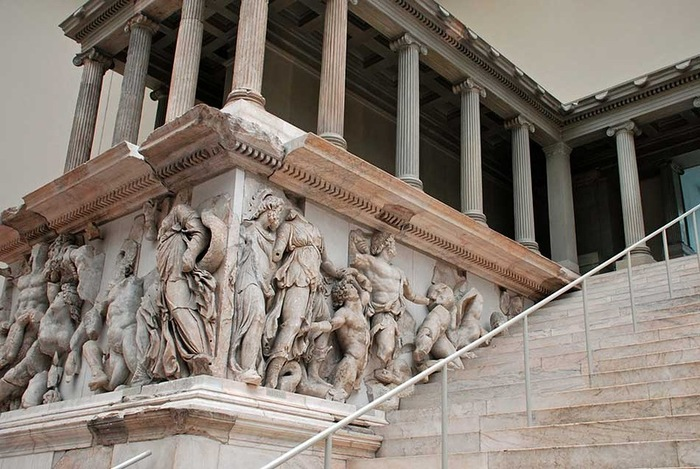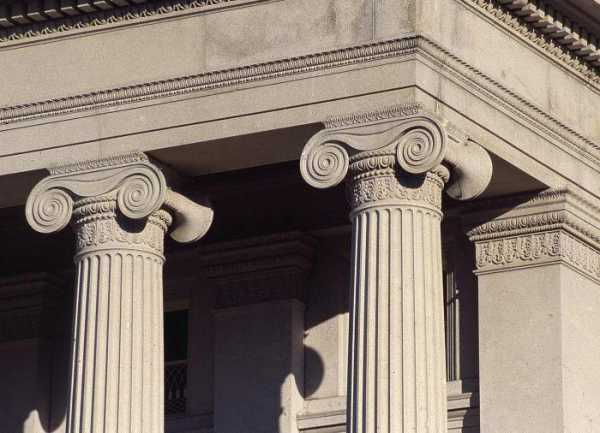The architecture of Hellas can be called Man-centered, and even ‘humanoid’ (in a certain sense). The saying ‘Man is the measure of all things’ - concluded for the Greeks the idea that all objects and phenomena of the surrounding world should not only be evaluated from the point of view of ‘convenience’ for man, but also created with the help of calculations based on the proportions of the human body. The Greeks considered the art of designing and erecting buildings in the same way.
The Hellenes' residential buildings have not survived to our time, but we can judge about the ancient Greek architecture by the beautiful temples that abundantly adorned their cities.
Already in the Archaic period in Ancient Greece, the basic principles of architecture appeared and were generally approved:
1. the Greeks did not use arched vaults and domes, so all their buildings consisted of vertical supports - columns and, supported by them, straight horizontal floors;
2. the main types of columns and the ratio of load-bearing and non-bearing parts of the building were formed into a rigid system, called order (from Greek ‘order’ - ‘norm, order’);
3. the proportions of buildings were calculated on the basis of human proportions, and architectural elements were sometimes likened (of course, very conventionally) to parts of the human body;
4. architects paid more attention to exteriors (the appearance of buildings) than to interiors.
5. the aesthetic principles of ancient Greek architecture were based on a combination of proportionality and simplicity, which found expression in the ‘sayings’ of the era: ‘nothing too much’ (the words written on the temple of Artemis) or ‘we love beauty without fastidiousness and wisdom without pampering’ (the saying of the ruler of Athens - Pericles).

The main achievement of the Archaic period is considered to be the emergence and approval of the order system in architecture - the relationship between the support (column) and the slab, which it held.
The classical Greek column consisted of three parts: the base - the base on which the body (or trunk) of the column was set and the capitellum - its uppermost part supporting the floor beams.
The Greeks created three types of columns, which became the basis of the classical orders: Doric, Ionic and Corinthian. Each of them was anthropomorphic in its own way, that is, it was endowed in the imagination of the Greeks with features inherent in a human being.
So the simplest, ‘strong’ and powerful - Doric order - was the embodiment of the image of a man-athlete - its capitals were devoid of any decorations, and the body had some thickening - entasis, as if it really felt the pressure from above, which with an effort to hold.
The Ionic order had lighter and more graceful proportions and corresponded to the feminine principle. This femininity was especially evident in the capitals of the Ionic column - it was decorated with spiral curls on both sides - volutes - resembling locks of hair arranged in a hairstyle.
A little later, the Corinthian order appeared - according to the Greeks, corresponding to the image of a young girl. Its trunk is slender and tall, and the capitol, lush and complex, resembles a basket with stylized leaves of the acanthus plant.
The entablature, the non-bearing part of the order, in turn also consisted of three elements (it must be said that the Greeks were very fond of the three-part division). These elements were called from bottom to top: architrave, frieze, cornice.
The architrave and cornice became more complicated as the ‘intricacy’ and height of the column increased. That is, the simplest architraves and cornices were in the Doric order, and the most elaborate and fancy - in the Corinthian.

The main aesthetic function of the entablature was the frieze - its central element in the form of a ribbon.
The friezes of the Ionic and Corinthian orders were not divided into metopes and triglyphs, and represented a smooth ribbon. However, the Greeks, who loved decorativeness and multicolor, most often placed a sculptural relief on this ribbon, telling, for its entire length, about some significant event - mythological or historical.
However, I would like to point out that the frieze in architecture is not only a part of the entablature. In general, it refers to architectural elements resembling long ribbons decorated with reliefs or paintings on a particular subject. One of the most famous examples of such a frieze is a part of the Pergamon Altar, with images of the struggle of gods and titans.
The Greek order system became the basis of classical European architecture, and has not lost its relevance to the present day.
I note that the choice of order by Greek architects, when building temples, depended on what deity this temple was dedicated to.


















